My approach to closing the gap between MTH Alco PA's
BEFORE: The space between the units is 1.63 inches. Scales out to just over 6.5 FEET.
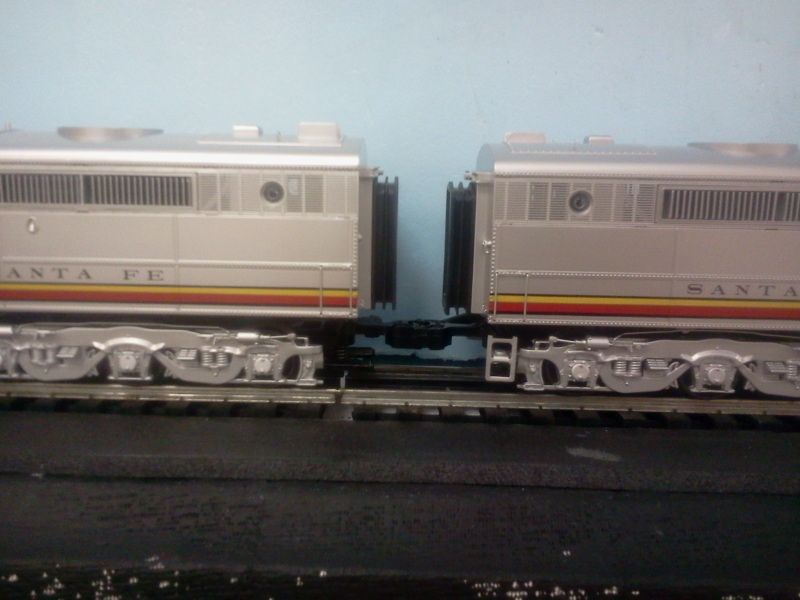
AFTER: The spece between the units in now .65 inches. This scales out to 2.6 FEET.
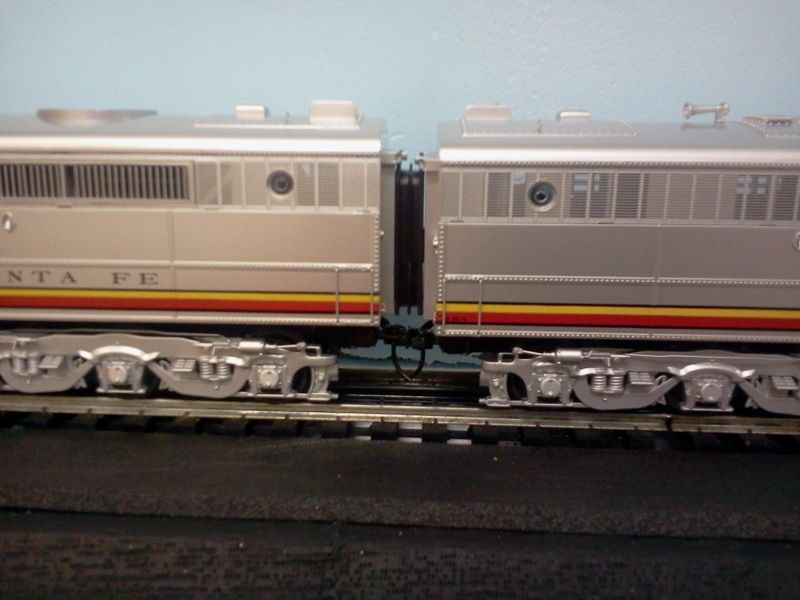
Earlier in the year I purchased the Premier Proto-3 version A-B-B-A set of MTH Santa Fe Alco PA's. I was a little disappointed that there was so little improvement on the exterior over the same Proto-1 set that I purchased 20 years ago. As far as I could tell (since I sold my original set many years ago and a side-by-side comparison impossible) the lift rings on top was the only outwardly visible change. The internal changes: Proto-3 and the trailing "A" is now powered and has smoke. In the Proto-1 version the trailing "A" only had a light package.
The inner-most axle on all units still have the plastic blind wheel sets. The rear ladders for all the units are still attached to the trucks and not the body. The thick black cord that runs from the rear of the lead A-unit to the rear of the trailing A-unit is still under the dummy couplers and very difficult to connect. In addition, this cord is just plain ugly. Only the lead "A" has a speaker which is VERY obvious when an A-B-B-A lash-up is passing by. All the engine sounds in the first unit followed by total silence from the last three.
Soooooo, I decided to buy a digital caliper, a wheel puller, an additional speaker, some scale wheel-sets, 3 pair of Kadee #805 couplers, some min-tronics 2-conductor wire sets (for the additional speaker) and some cutting wheels for my Dremel. Then I got to work.
My tasks are detailed below in the order performed.
1 - Drop all the trucks, remove the side frames and cut off the the ladders.
2 - Remove the blind wheel sets and replace them with N/W Shoreline scale wheels.
3 - Remove the dummy couplers and cut off the excess metal (about 1/2") so that my home made mounting pads for the Kadee couples could be attached on the underside of the frames. Mount the couplers.
4. - Re-route thick black cable through the rear doors. The male side was super-glued to a cut-out in the door. The female counter part was passed through the opposite door and is free and easy to connect to the male. After the connection is made and the units are coupled together the cable is completely hidden.
In the picture below the left side is male connection re-routed through the door of the lead "A". The right shows the "B" which has the retractable female connection.
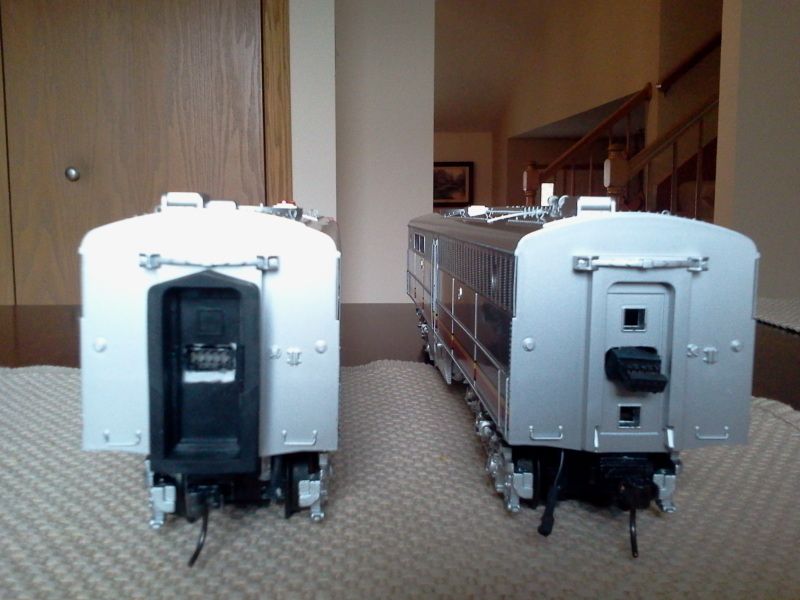
This picture shows the "B" with the cord fully extended which allows for easy connection when both units are on the tracks. Ten times easier than using the MTH method of connecting the cables under the lobster claw dummy couplers.
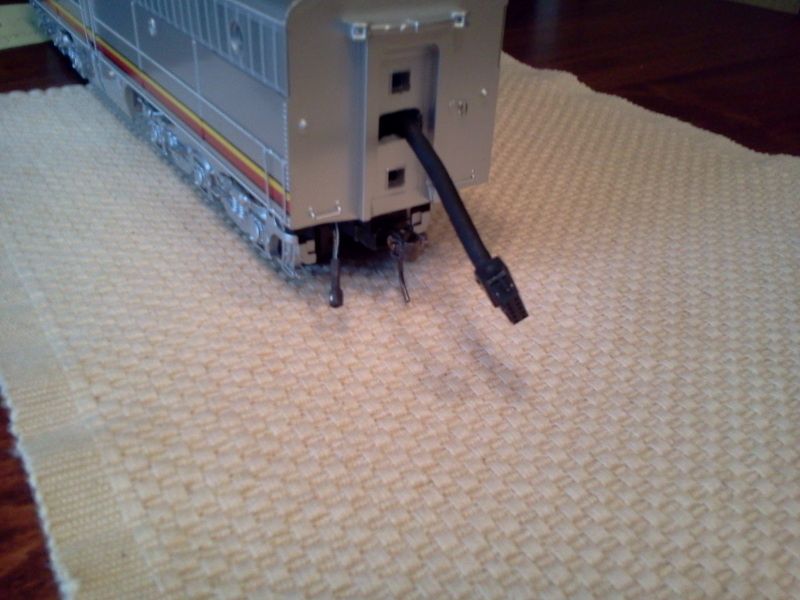
5. Drop the fuel tank on the lead "A" and solder feeder wires to the speaker post which will drive the 2nd speaker in the second B-unit. The result will be a more even distribution of the diesel sounds. The speaker in the "B" is mounted to face up and directs the sound to the large exhaust fan on the roof. Since the lead speaker faces down, having the trailing speaker face up alters the just enough to give the "audio illusion" of additional diesels running.
The speaker wire is connected in parallel from the lead "A" to the second "B". This is accomplished by the 2-conductor wire mentioned earlier. I chose to run these wires outside the doors to give the appearance of actual connections between the units. The wire is visible in all the previous pictures but the picture below shows it connected. It can be adjusted higher or lower. I may decide later to run this connection through the doors as well. But, for now I like how it looks on the outside.
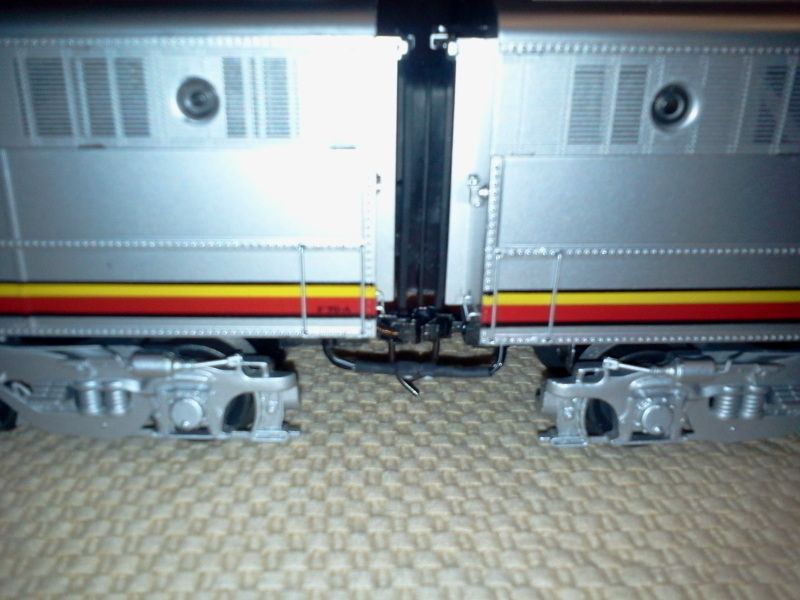
The only remaining task is mounting the ladders. I could use the ones that I cut from the side frames in step #1 but I am first going to see if I can get different ones 3-D printed for a reasonable price.
Note: I am only using rubber a single diaphragm between the diesel lash-ups. This works out fine because one is all the space would allow and when coupled together the diaphragm neatly fits inside the opposite door frame.
The next big test will be when I run this on the club layout in a few weeks.


